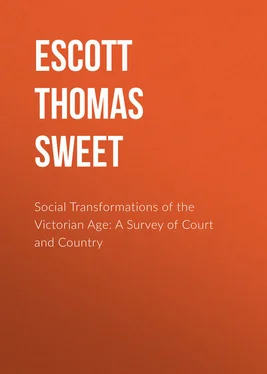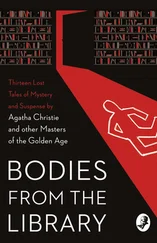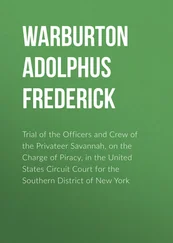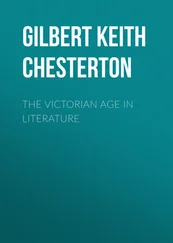In 1452 Sir Godfrey Feilding, mercer, was the Lord Mayor from whom the Earls of Denbigh descend. Five years later another trader, Sir Godfrey Boleine sat in the chair of Whittington. One of his lineage, a generation or two later, as Earl of Wiltshire, gave Henry VIII. his second wife, and England her first Protestant Queen. Some ninety years thereafter, Lord Mayor Sir John Gresham, grocer, supplied from his numerous family a Duke of Buckingham, and a Lord Braybrooke. In 1557 Sir Thomas Cooke, draper, was installed in the Mansion House. To his descendants at least two patents of nobility were granted, the peerages of Salisbury and of Fitzwilliam. In 1570 a clothworker, Sir Rowland Heyward, became chief of the City Corporation. He was the ancestor of the Marquises of Bath. Fifteen years subsequently to this date, Sir Wolston Dixie, of the Skinners Company, was at once the Sovereign of the City and the forerunner of the peers bearing the titles of Compton or of Northampton. During the earliest years of the seventeenth century there reigned to the East of Temple Bar Sir John Houblon, a grocer. His descendants were to number amongst them the Irish Viscounts who in the fulness of time gave to Queen Victoria in Lord Palmerston the most popular and powerful Premier during the first half of her reign. Within another hundred years Lord Mayor Sir Samuel Dashwood, vintner, became a progenitor of future nobles only less prolific than his sixteenth century predecessor, Sir Thomas Cooke. Those who sprang from him obtained in due course the peerages of Warwick and Brooke. When in 1711, as Tory Ministers, Harley and Bolingbroke dined at the Guildhall, they were entertained by Sir Gilbert Heathcote whose posterity was ennobled by the styles of Aveland and Donne. One of Lord Salisbury’s Christian names, and his second title, that of Viscount Cranborne, perpetuate the memory of the Sir Christopher Gascoigne who was Lord Mayor of London during the first Ministry of Henry Pelham, in 1753.
These instances serve circumstantially to remind us that the titled, like the untitled aristocracy of the country has always represented, as it represents to-day, in nearly equal proportions industry and intelligence in enterprise, perhaps even more than antiquity of descent. The dramatic circumstances of his rise and of his fall; the extent to which the latest developments of science, adventure and speculation were embodied in the person and in the career of the York linendraper’s son, make George Hudson, the ‘railway King’ specially conspicuous amongst those on whom shrewdness and opportunity conferred material success. But the type is not merely as old as the present century. It has existed as long as English civilization itself.
When Queen Victoria came to the throne, there was little in the signs of the times to betoken as near at hand the national prosperity which was firmly established before she had been seated on her throne five and twenty years. National depression followed the exhaustion of English energy and finance which had been caused by the struggle with France. Long after the heavy war taxation had ended with Waterloo, and the conqueror of Waterloo had as ruler of the State reduced army expenses to an unexpectedly low figure, the national fortunes were at an alarmingly low ebb. Sinecures had been nearly abolished. A further saving of expense had been expected by the partial or practical disbandment of the Yeomanry. But between 1815 and 1845 the series of bad years was broken only in 1822-5. Even then, English enthusiasm at the liberation of South America from Spanish rule was followed by reaction consequent upon the sinking of British millions in loans to the Spanish Republics of the New World. During the first decade of the Victorian epoch, better harvests coincided with the importation of gold in small quantities from the Ural mines. The railway enthusiasm provided fresh employment for the working classes. More even than by gold and railways was done by the fiscal reforms due to Cobden, Bright, Peel, Villiers and Gladstone to give impetus to trade, and commerce, and to make England the market of the world. Hence the origin and multiplication of English millionaires. The country was thus gladdened by fitful gleams of a long unknown prosperity. But budgets continued to be bad, and Whig finance was in chronic disrepute. During no small part of a century, English exports had remained almost stationary at £51,000,000 a year. The distress was aggravated by the cotton spinning failures of 1842-3. On the eve of these the Burnley guardians told the Home Secretary of the inadequacy of their funds for the relief of local necessities. So gloomy indeed seemed the national fortune, that the Government of the day sold the Crown rights over Epping Forest. Nor as a fact was it till the forty-fifth year of the Queen’s reign that in 1882, this historic pleasure ground presented those scenes with which it is chiefly identified to-day. 3 3 But much of the Forest being saved by the Common rights had not at any time been enclosed.
The first of the most striking transformations of the Victorian era took place in the eleventh year of the Queen’s reign and continued during two or three years thereafter. The gold discoveries in California began in 1848. They differed from those which had preceded them elsewhere on American soil in the circumstance that the new treasures were distributed among the entire population, and were not confined to a small band of despotic aliens, as had happened under the sway of the Spanish chiefs and the Incas of Peru. In 1850-1 the same precious metal as three years earlier had been yielded to diggers on the Californian slopes and on the banks of the Sacramento River was found to exist in the alluvial plains of Ballarat in our own Australian colonies. The practical value of these new sources of wealth was variously regarded by political critics and scientific economists. The French Chevalier, and our own Cobden predicted as a result of the new gold supplies a fall in the value of money, a revolution in property, the doubling of wages and prices and the impoverishment of capitalists. Others foretold the speedy exhaustion of the new gold mines. That view was sanctioned by the expert authority of the famous geologist, Sir Roderick Murchison, who spoke of the limits of the recently discovered gold as ‘Nature’s Currency Restriction Act.’ Sir Archibald Alison, not an incautious person, and certainly no friend to innovation, elaborately supported a contrary opinion. He engaged in a series of minute calculations for the purpose of showing that the gold supply now available could not be used up within four centuries. When the alluvial soil was drained of its precious deposits, there would, as Alison argued, remain the parent rocks, the cost of working which seemed likely to diminish and not to increase with time. Nor was this authority less sanguine as to the beneficent effects upon all classes and interests of the new gold. Commerce, he argued, would be promoted at every turn. With increasing production there would be fresh employment, a practical decrease in taxation, and generally in the payments made by the poorer classes to the rich. Before the Australian discoveries of 1850, scarcity of gold had, as Alison contended, raised the value of money, and emphasized the difference between the rich and the poor. The Currency Restriction Act had been passed in 1844. ‘Nature’s Grand Currency Extension Act’ was the name given by the historian to the fresh sources of wealth revealed in Bendigo and Ballarat. The facts and figures were something to the following effect. The discoveries of 1850-1 had added sixteen or eighteen millions to the world’s money in comparison with the eight or ten millions which in the fifteenth century and onwards had been provided by Mexico and Peru. On the other hand the economist Chevalier anticipated that, as a consequence of the new gold, money in ten years would fall by one half. ‘In 1800,’ so ran the argument of this economist, ‘the annual addition to the gold of Christendom was barely two and a half millions. In 1848 it amounted to thirty-eight millions. In 1858 the total was a hundred and ninety millions. Hence,’ he insisted, ‘between 1858 and 1868 the additions to the world’s available stock of the precious metal would be at least as much as the aggregate of additions during the three preceding centuries, that is four hundred millions sterling.’ The stages in this induction may be thus briefly epitomized. During the three and a half centuries since the voyages of Columbus and of Cabot opened the New World to the Old, two thousand millions sterling had been added to the gold and silver of our planet. The hectolitre of wheat before A.D. 1492 cost in Paris from 2s. 6d. to 2s. 9d. Between 1848-58 it cost 16s. 8d. In other words if the usual grain test be applied, money had fallen during three and a half centuries to nearly one-sixth of its original value. It was upon calculations like these as well as upon certain other considerations that Chevalier based his argument that the fresh influx of gold would make money fall again by three-fourths of its value. This was in effect to say that to procure the same amount of subsistence as hitherto four times as much gold would be required. Cobden’s anticipations were to the same effect. So general was the belief of an impeding depreciation of gold and appreciation of silver that Holland actually demonetized gold and adopted silver as its standard money. All these fears were doomed to disappointment. The hopes were more than realized. The third quarter of our present century has proved the most prosperous which modern Europe or the world has ever known. A careful and voluminous writer on this subject, the late R. H. Patterson 4 4 The Age of Gold , vol. i. p. 37.
attributes this miscalculation to the ‘famous currency principle’ which grew up after the great war.
Читать дальше












